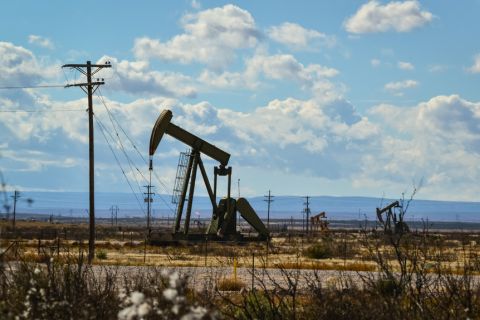While riding to the Denver airport after attending Hart Energy's recently held Developing Unconventional Oil conference, this editor and an ExxonMobil Corp. executive fell into a conversation about the opportunities and issues discussed during the event.
Despite the focus on oil, many presentations touched on natural gas production and the need for more midstream infrastructure. During a lull in our conversation about those topics and as we switched to discussing fracking technology, our driver added a particularly insightful observation about well completions.
Surprised, we inquired about his background. He had been trained as an engineer, and had spent some 20 years working with Halliburton Co. as a project engineer. Yet, like so many others, he left the business during the last bust cycle. Naturally, we handed over business cards and asked him to contact us if he would consider coming back into the business, as both of us know many companies looking for experienced employees.
The look on his face as he accepted the cards told the story. To say the least, he was doubtful of our assurance that the current oil boom would last.
Today, energy managers continue to bemoan the lack of experienced help. Specifically, midstream service and supply companies are looking for project managers so they can take on more work, be productive and satisfy the demand for growth desired by their owners, stockholders and private-equity providers.
At present, industry managers, from the upstream sector to the downstream, continue to call for experienced employees, but in many situations those calls go unanswered by workers who have left the energy industry during the past down cycle. How can these workers be enticed back into the fold despite the historical boom-bust cycle of the industry?
In fact, a more relevant question might be, are we in a boom or bust cycle? The likely answer is, neither. The boom-bust cycle is slipping sideways, as drill rigs exit some dry-gas fields but start up in liquids plays in ever increasing numbers. Yes, long-lived jobs exist in the energy market, but, inarguably, economic uncertainty is everywhere, so determining the right place at the right time is problematic.
Even when natural gas supply and demand finds equilibrium, and oil production is moved to profitable markets via new infrastructure, further challenges lie in wait in the form of environmental regulations.
In the plus column, this year President Barak Obama recognized the need for domestic energy production during his State of the Union address, in which he touched upon hydraulic fracturing and the need to move toward greater use of natural gas.
"We have a supply of natural gas that can last America nearly 100 years," he said. "And my administration will take every possible action to safely develop this energy. Experts believe this will support more than 600,000 jobs by the end of the decade. And I'm requiring all companies that drill for gas on public lands to disclose the chemicals they use. Because America will develop this resource without putting the health and safety of our citizens at risk. The development of natural gas will create jobs and power trucks and factories that are cleaner and cheaper, proving that we don't have to choose between our environment and our economy."
As unusual as it may be for a president to discuss a particular industry (other than health care) in his national speech, encouraging new sources of demand for natural gas, which might come from natural gas vehicles, exports of liquefied natural gas or the petrochemical industry, among others, is a step in the right direction.
Recommended Reading
Range Resources Holds Production Steady in 1Q 2024
2024-04-24 - NGLs are providing a boost for Range Resources as the company waits for natural gas demand to rebound.
EQT Sees Clear Path to $5B in Potential Divestments
2024-04-24 - EQT Corp. executives said that an April deal with Equinor has been a catalyst for talks with potential buyers as the company looks to shed debt for its Equitrans Midstream acquisition.
Novo II Reloads, Aims for Delaware Deals After $1.5B Exit Last Year
2024-04-24 - After Novo I sold its Delaware Basin position for $1.5 billion last year, Novo Oil & Gas II is reloading with EnCap backing and aiming for more Delaware deals.
Matador Hoards Dry Powder for Potential M&A, Adds Delaware Acreage
2024-04-24 - Delaware-focused E&P Matador Resources is growing oil production, expanding midstream capacity, keeping debt low and hunting for M&A opportunities.
TotalEnergies, Vanguard Renewables Form RNG JV in US
2024-04-24 - Total Energies and Vanguard Renewable’s equally owned joint venture initially aims to advance 10 RNG projects into construction during the next 12 months.





